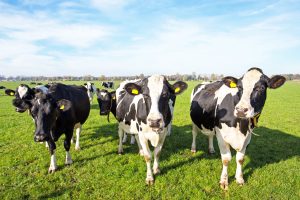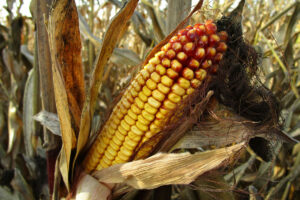Fernando Díaz
Using sex-sorted semen has become a common reproductive practice in the dairy industry. However, it has been shown that using sex-sorted semen reduces fertility. This can be caused by the sorting process of the sperm altering the fertilizing capacity and viability of spermatozoa, and/or the lower number of spermatozoa per straw.
A recent study conducted in Turkey (Karakaya‐Bilen et al., 2019) evaluated fertility (pregnancy per artificial insemination) of lactating dairy cows inseminated with conventional or sex-sorted semen after being subjected to one of three timed artificial insemination (AI) protocols.
Lactating dairy cows (356 animals, 73% primiparous cows) from two commercial dairies located in Bursa, Turkey, were enrolled in the experiment. They were housed in free-stall facilities and milked and fed three times daily. Cows were randomly assigned to one of the six treatments having three synchronization protocols and two types of semen. The synchronization treatments included:
- Ovsynch: Cows were injected with GnRH (gonadotropin-releasing hormone) and PGF2α (prostaglandin) on days -10 and -3, respectively. A final dose of GnRH was injected 56 hours after PGF2α. Day of AI was designated as Day 0 of the treatment.
- Presynch-Ovsynch: Cows received one dose of PGF2α on days -35 and -21, and Ovsynch was initiated on day ‐10 as described previously.
- Double Ovsynch: Cows received two Ovsynch protocols with a gap of 7 days, with the first Ovsynch starting on day ‐27.
Cows were inseminated between 74 and 80 days postpartum with either conventional or sex-sorted semen from the same sire. While the conventional semen straws contained 12 million morphologically normal sperm cells (75% progressively motile), the sex-sorted straws contained only 2.2 million morphologically normal sperm cells (86% progressively motile). Pregnancy diagnoses were performed by ultrasonography on days 31 and 62 after insemination.
The findings of this study were published in Reproduction in Domestic Animals. In summary:
- Fertility declined when cows were inseminated with sex-sorted semen as compared to conventional semen on day 31 (38.1 vs. 50.6%) and on day 62 (34.5 vs. 45.6%), representing approximately a 25% reduction in fertility.
- Presynchronization before Ovsynch increased fertility in both cows receiving conventional and those receiving sex-sorted semen. However, fertility did not differ between the two presynchronization methods.
- The increment in fertility at 62 days for sex-sorted semen combined with presynchronization of the oestrous cycle was 18.1 percentage units, from 21.0% in cows receiving Ovsynch to 39.1% in cows receiving either Presynch-Ovsynch or Double Ovsynch. In cows receiving conventional semen, presynchronization methods increased fertility by 10.6 units (48.6 vs. 38.0%).
In conclusion, this study demonstrated that inseminating cows with sex-sorted semen reduces fertility, and presynchronizing the oestrous cycle with either Presynch-Ovsynch or Double Ovsynch protocols increased fertility considerably in cows receiving this type of semen.
Reference
Karakaya‐Bilen, E., Yilmazbas‐Mecitoglu, G., Keskin, A., Guner, B., Serim, E., Santos, J.E.P., and Gümen, A. 2019. Fertility of lactating dairy cows inseminated with sex‐sorted or conventional semen after Ovsynch, Presynch–Ovsynch and Double‐Ovsynch protocols. Reprod Dom Anim. 54:309–316.









